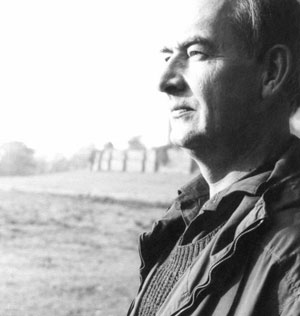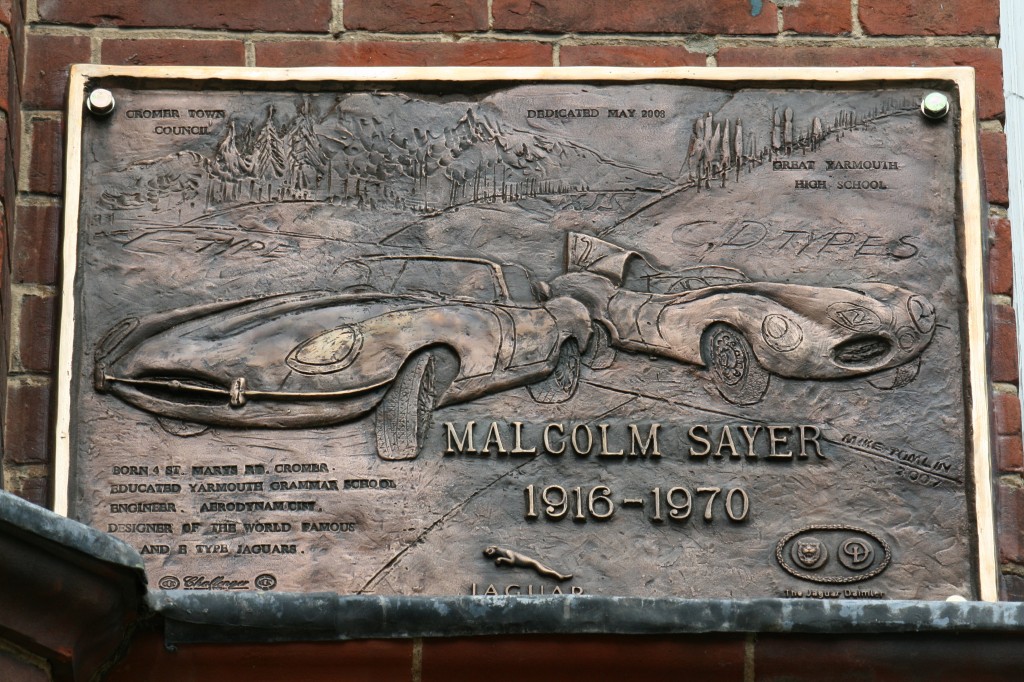 Born in Cromer, Norfolk, in the middle of WW1, Malcolm Sayer passed the scholarship exam for Great Yarmouth Grammar School – where his father taught the unusual combination of Maths and Art – at the age of 9 instead of the usual 11 years. From the start he was interested in maths art and science, and despite many childhood illnesses, he was a high academic achiever and gained the prestigious Empire Scholarship at the early age of 17.
Born in Cromer, Norfolk, in the middle of WW1, Malcolm Sayer passed the scholarship exam for Great Yarmouth Grammar School – where his father taught the unusual combination of Maths and Art – at the age of 9 instead of the usual 11 years. From the start he was interested in maths art and science, and despite many childhood illnesses, he was a high academic achiever and gained the prestigious Empire Scholarship at the early age of 17.
This enabled him to attend the then Loughborough College, where he gained a first class honours diploma in Automotive Engineering. He was also Secretary of the College motor Club and for two years Editor of the College Magazine.
After graduation, Malcolm joined the Bristol Aeroplane Company, studying aeronautics and looking at ways of improving the efficiency and design of significant WW2 aircraft, particularly the Blenheim and the Beaufighter; and developing his expertise in aerodynamics as applied to mechanical design.
Following the war he married Pat Morgan in 1947 and after his daughter Kate was born in 1948 he went to Iraq to work at Baghdad University. This turned out to only exist on paper, so he worked instead maintaining the fleet of government vehicles.

The plaque in Cromer outside the house Malcolm grew up in.
Commisioned by Mike Tomlin of the E-type Challenger Club
In 1950 he returned to England and joined Jaguar in 1951. Here he was involved in designing the first post-war British sports/racing car capable of challenging the supremacy of Mercedes and Ferrari, which had been dominant since before the war. His unique method combined logarithms and complex mathematical formulae to plot the precise intricacies of 3D shape and volume to develop the optimum aerodynamic curve. Some of his particular contributions were the introduction of slide rule and seven-figure log tables to work out formulae he invented for drawing curves, work which is now undertaken by complex Computer Aided Design software.
The first car in which he was involved was the C-type Jaguar which won Le Mans first time out and then for three years running. 1952 saw the design of the Jaguar D-type, which like the C-type used a relatively small engine aided by aerodynamics, and went on to become the worlds most successful sports/racing car. To surpass the C-type, Sayer then designed the revolutionary (on account of its monococque body construction hitherto only used in aircraft) D-type Jaguar which was one of the most successful racing cars of all time – winning Le Mans in 1955, 1956 and 1957. On the Mulsanne straight, the D-type could achieve a speed of 192.4 mph. In 1961 full time production of the road going E-type Jaguar, aerodynamically and mathematically designed by Sayer, commenced. Production lasted until 1974 with 72,000 cars being produced.
In 1965, he designed the Jaguar XJ13, a mid-engined Jaguar sports racing car that was intended for competition at Le Mans. Cost constraints and a rule change at Le Mans meant the XJ13 was never driven in international competition, but it exemplified all of the classical Sayer sophistication in aerodynamics as his earlier designs. In 1971 the XJ13 prototype was brought out of storage to help promote the new V12 E-type but it was largely written off in a major crash. Even today, many of the design elements associated with the E-type Jaguar can be found on the company’s cars. The long bonnet, haunches over the rear wheels and the stance are all features incorporated into Jaguar’s XK8 coupe.
The Jaguar E-type became an icon, and in the words of the New York Museum of Modern Art, where an E-type is on permanent display:
“Sayer uniquely blended science and art to produce timeless shapes of exceptional and enduring beauty. He brought science to the art of car design; and scientifically produced works of art.”
He was one of the first designers to apply the principles of aerodynamics to cars with his scientific calculations, creating one of the most beautiful forms of the era. He described himself as an aerodynamicist rather than a stylist (“I’m not a hairdresser!“) and the aerodynamic quality of the cars was his prime concern. A design had to ‘work’.
The designer was only part of Malcolm Sayer. He was also very much a family man – father to three children, (aforementioned Kate, son John and a second daughter Mary, born in 1953 and 1956 respectively), and was a very good intuitive musician and multi instrumentalist, a brillant cartoonist and an excellent mimic. By all accounts he was great company and very entertaining.
In later years he worked as Director of Design at Jaguar until his untimely death in 1970, one month before his 54th birthday.

